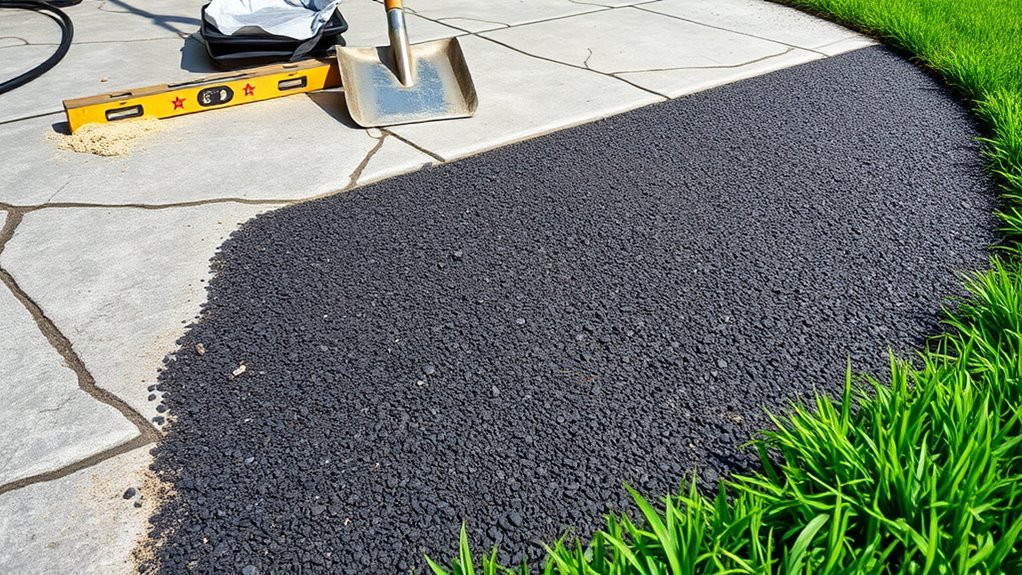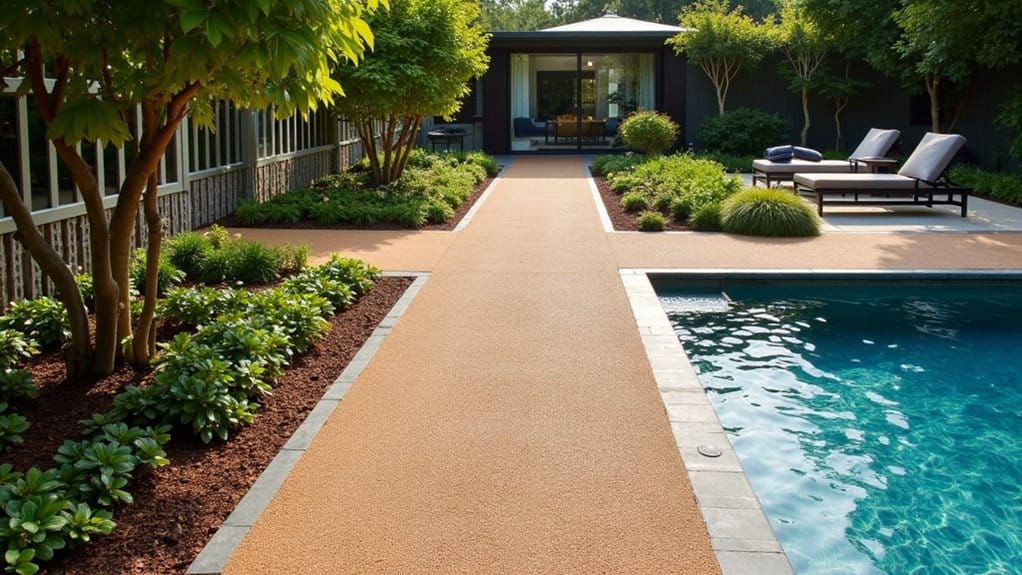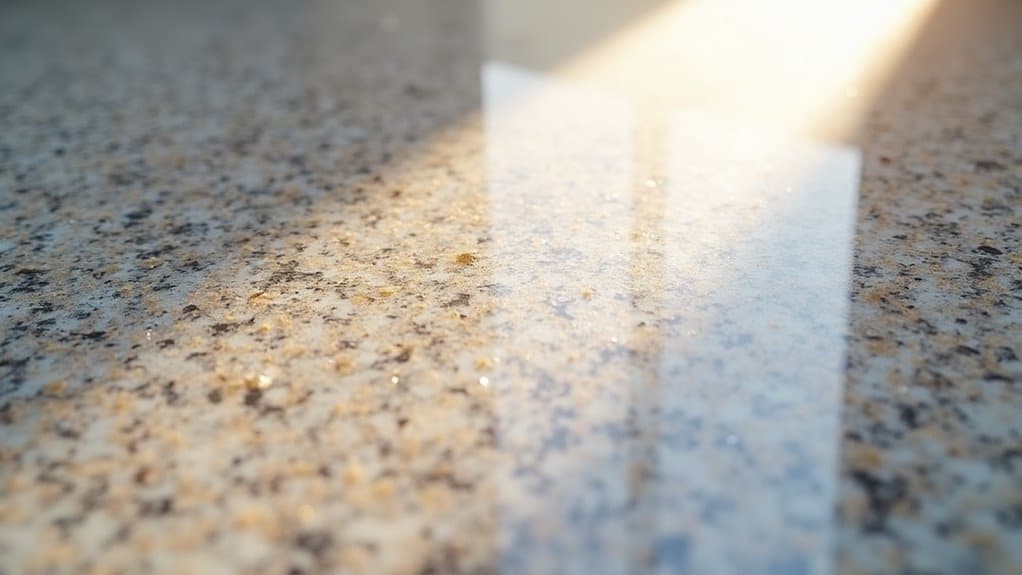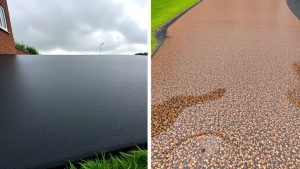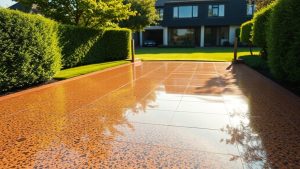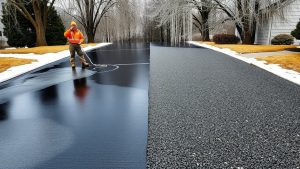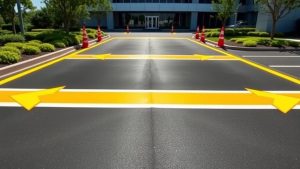Yes, you can lay a tarmac driveway over an existing surface, provided the base is in good condition and has been properly prepared. Before installation, check for any cracks or damage, and ensure the surface is clean and free of debris. Applying a tack coat is crucial for ensuring good adhesion, and it's advisable to have a minimum thickness of 25mm for durability. If you're thinking about this upgrade, you'll find helpful tips on preparation and the benefits of tarmac overlays.
Table of Contents
ToggleKey Takeaways
Yes, you can lay a tarmac driveway over an existing surface, provided it's in good condition and properly prepared.
First, make sure the existing surface is clean, stable, and free of debris, cracks, or potholes. A minimum thickness of 25mm is recommended for the tarmac overlay to ensure it lasts well.
It's also crucial to apply a tack coat between the old and new asphalt for proper bonding. Lastly, consider drainage solutions to prevent water pooling, which can weaken the overlay over time.
Understanding Tarmac Overlays
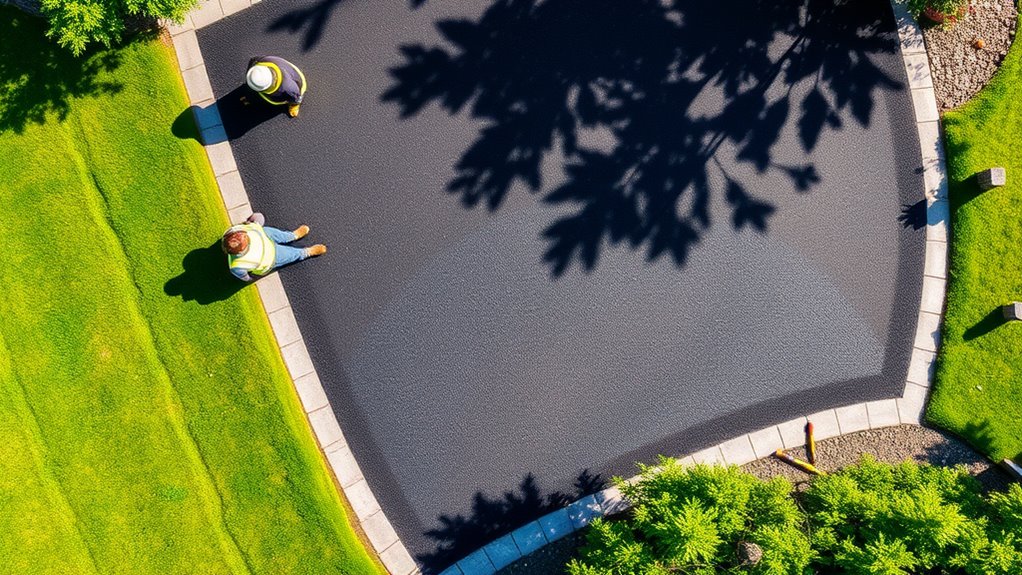
Understanding tarmac overlays is essential if you're looking to improve or repair your driveway. Tarmac overlays offer significant benefits, such as a better appearance and a longer lifespan. For optimal durability, the overlay should be at least 25mm thick to ensure proper bonding with a tack coat. This helps prevent reflective cracking and improves adherence to the existing surface. Before applying the overlay, check that the base is solid and that the surface is clean, free from debris and organic matter. Proper steps are essential for successful installation and should be followed to maximize the longevity of your overlay. Good drainage is crucial; poor drainage can lead to water pooling, which can undermine the overlay's durability.
Assessing the Condition of the Existing Surface
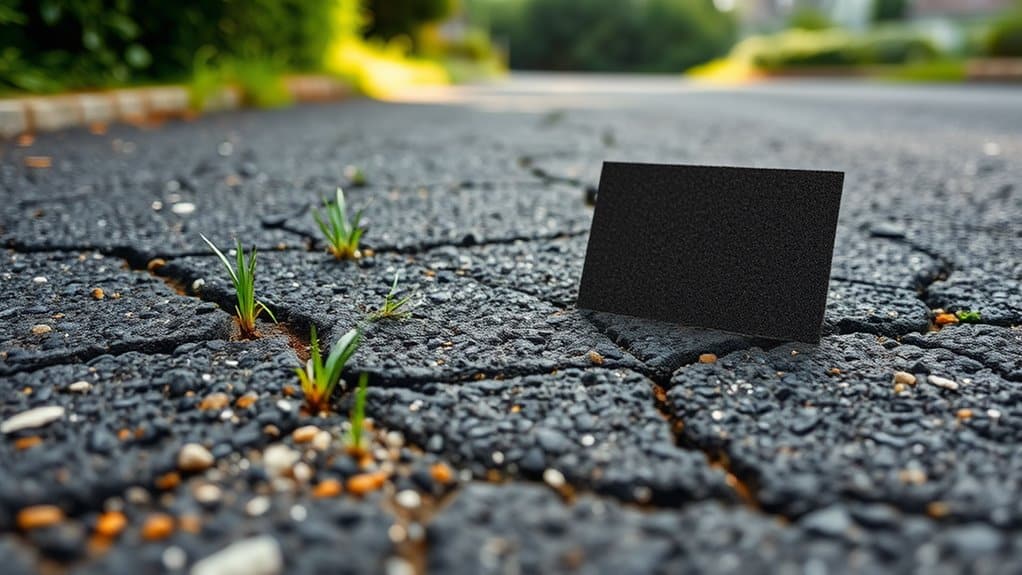
Before installing a tarmac overlay, it's vital to assess the condition of the existing surface.
Begin with a visual inspection to spot any cracks, potholes, or other damage that could compromise the new surface. Check the thickness of the current layer to ensure it can support the added weight. Asphalt overlay is an effective method to rejuvenate worn pavement, making this assessment even more critical. Evaluate drainage to prevent water pooling, and remove any organic matter like moss or leaves.
It's also crucial to inspect the sub-base's depth and condition to confirm it can handle the load of the tarmac.
Preparation Steps for Tarmac Overlays
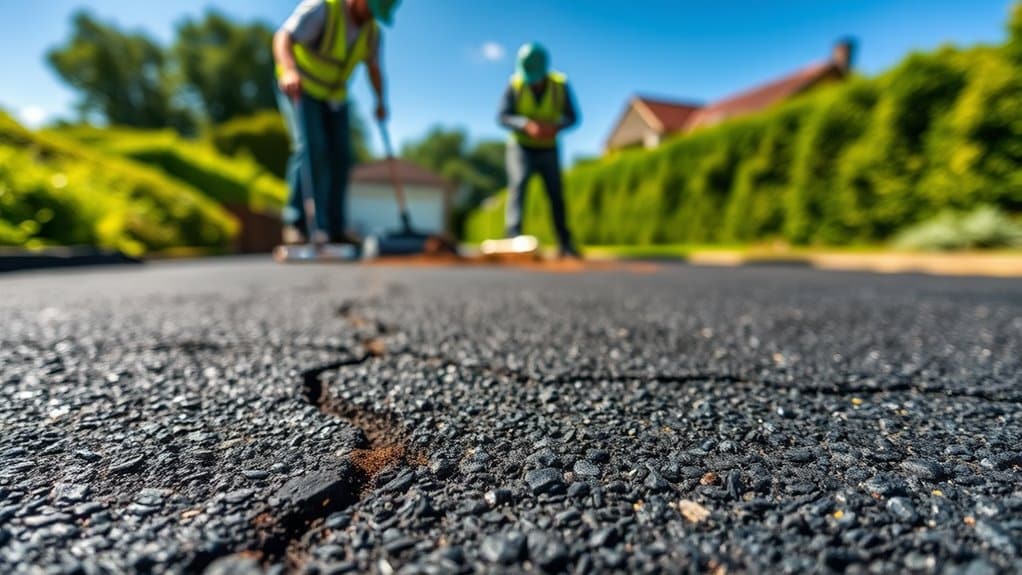
Before applying a tarmac overlay, it's essential to thoroughly assess the condition of the existing surface. Repair any damaged areas, such as cracks or potholes, to ensure a solid base for the new layer. Additionally, consider using cold-mix asphalt concrete for less-trafficked driveways to enhance the overlay's performance. Lastly, apply a tack coat to improve adhesion between the old and new asphalt. This step is crucial for achieving a durable finish.
Assess Existing Surface Condition
Assessing the existing surface condition is crucial for a successful tarmac overlay. Start by ensuring the driveway has adequate stability; it must be structurally sound to support the new layer.
Thoroughly clean the surface—removing dirt, debris, and any contaminants is key for a solid bond.
Next, evaluate the drainage solutions; effective drainage prevents water from pooling, which can damage the overlay.
Check that the materials are compatible; the new tarmac must adhere properly to the existing surface.
Lastly, ensure the surface is even and level to avoid issues with bumps or dips after installation.
Repair Damaged Areas
Repairing damaged areas is crucial for a successful tarmac overlay.
Begin by spotting any potholes and cracks. Clear out any debris, loose asphalt, and dirt from these areas.
For pothole repair, fill them with fresh asphalt and compact it to ensure it's level with the surrounding surface.
For cracks, use a high-quality sealant to stop water getting in, as this can cause further damage.
Addressing these repairs thoroughly before laying your overlay is essential; ignoring them can undermine the new surface's integrity.
A well-prepared base not only improves appearance but also extends the lifespan of your tarmac driveway.
Ensure Proper Adhesion
To ensure proper adhesion of a tarmac overlay, begin with a thorough assessment of the existing surface. Clean the area by removing dirt, debris, and any contaminants that could hinder adhesion. Apply a tack coat as a bonding agent, ensuring it is spread evenly for the best results.
| Step | Action | Purpose |
|---|---|---|
| Surface Evaluation | Check for structural integrity | Identify potential issues |
| Cleaning Requirements | Remove contaminants | Prepare for tack coat |
| Tack Coat Application | Apply bonding agent | Enhance overlay adhesion |
| Edge Preparation | Prepare edges | Ensure a uniform transition |
Cost Comparison: Overlay vs. Replacement
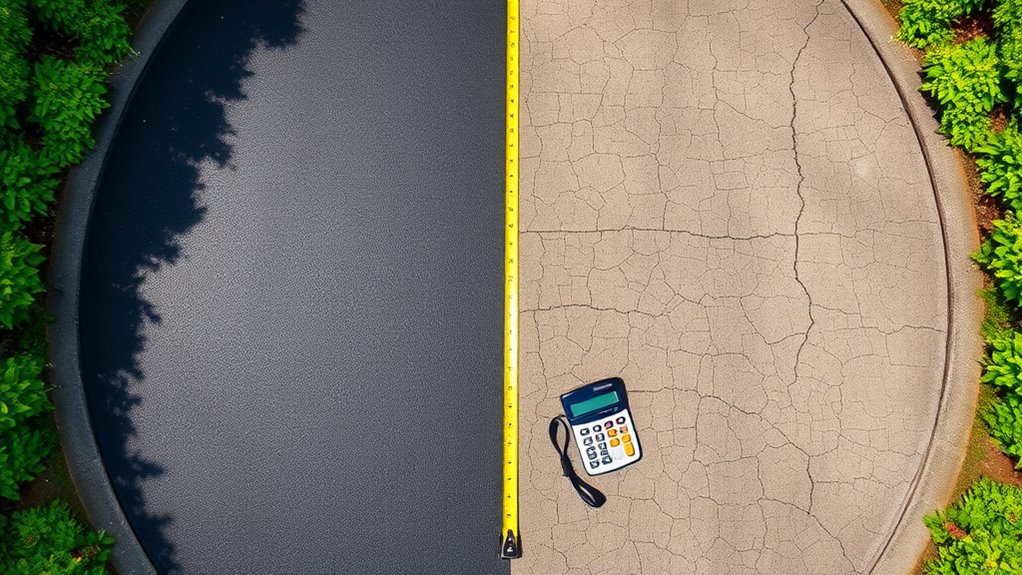
When deciding on the best option for your asphalt driveway, it's important to understand the cost differences between overlaying and replacement.
Overlaying typically ranges from £3 to £7 per square metre. It's a cost-effective solution that offers quicker completion times, making it ideal for driveways in decent condition. However, it may not fix any underlying issues.
On the other hand, full replacement costs between £8 and £15 per square metre, which includes the removal of the old surface and installation of new material.
While replacement offers better durability, it does come with higher costs and more disruption during the process.
Ultimately, weigh your immediate savings against long-term durability and maintenance needs to make the best choice for your driveway.
Environmental Considerations and Compliance
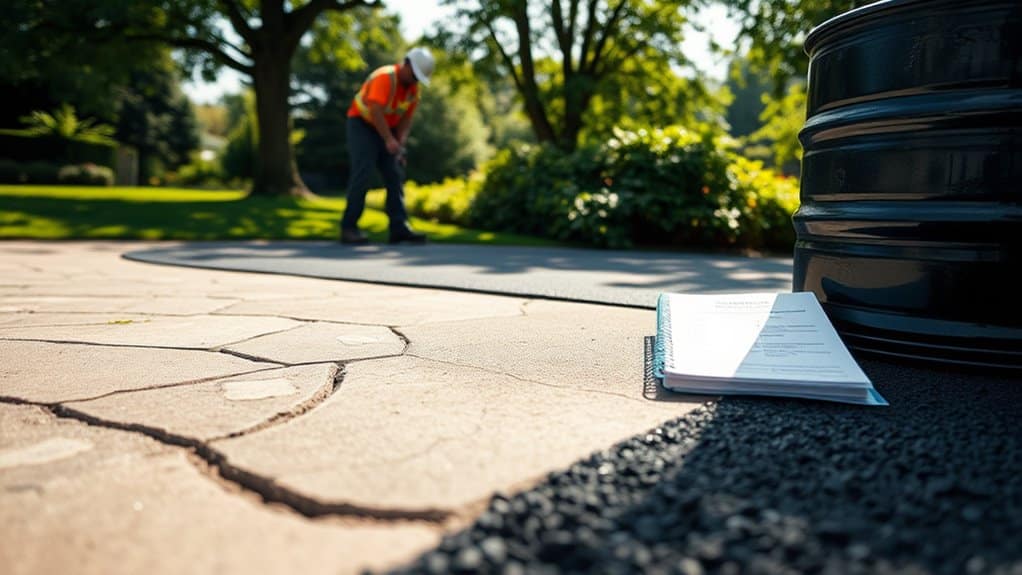
When deciding between overlaying and replacing your driveway, environmental factors are crucial. Opting for an overlay can offer significant benefits, such as reducing waste and conserving resources. This method limits the amount of old asphalt that ends up in landfills, which helps save fresh materials like aggregates and asphalt binder.
Additionally, incorporating recycled asphalt pavement (RAP) promotes sustainability by reusing existing materials. It is also essential to consider the benefits of permeable paving in your decision, as these designs can significantly improve stormwater management.
It's also important to ensure your installation meets local regulations, particularly regarding permeable designs that can enhance stormwater management.
By focusing on long-term maintenance, you can extend your driveway's lifespan and minimise environmental impact.
Success Stories: Case Studies of Tarmac Overlays
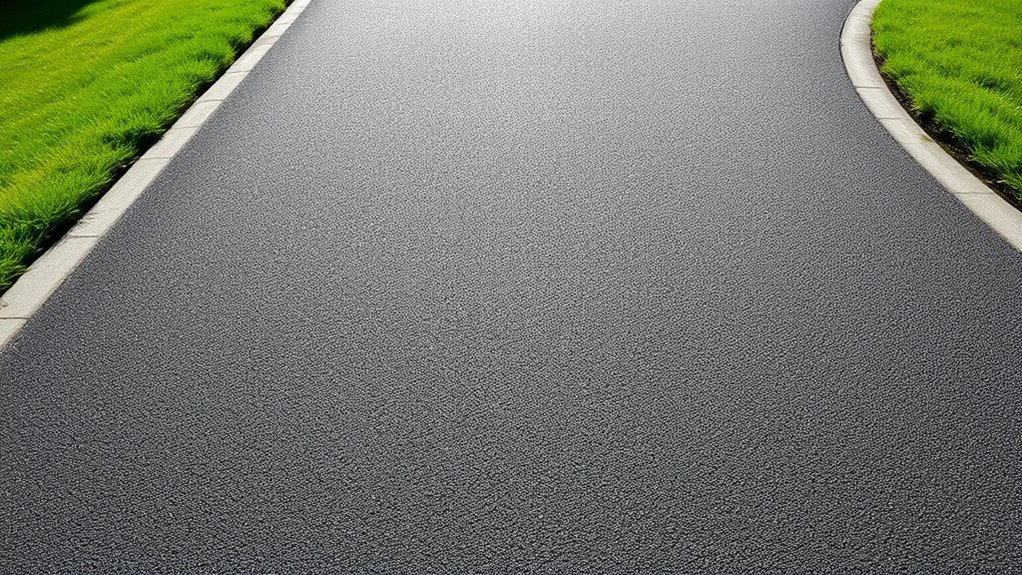
As homeowners look for effective ways to improve their driveways, successful case studies of tarmac overlays highlight their benefits.
A standout project is the Gravelrings installation in the UK, which transformed an old tarmac driveway into an attractive gravel surface without the need for removal.
Another example is Martin Gallun, who saw significant improvements in both appearance and durability through an asphalt overlay, making it a cost-effective option.
These projects show how overlays can save time, reduce disruption, and extend the lifespan of driveways.
With proper preparation and material choice, tarmac overlays can effectively restore and enhance existing surfaces.
Frequently Asked Questions
How Long Does a Tarmac Overlay Last?
A tarmac overlay usually lasts between 10 to 15 years, depending on how well it's installed and maintained. Regular care can significantly extend its lifespan, meaning you can benefit from a strong, durable surface for longer. For example, keeping it free from debris and addressing cracks early can help maintain its condition.
Can I Drive on the Overlay Immediately?
You can't drive on the overlay straight away; it's like rushing things. Tarmac needs time to cure properly, ensuring it sets correctly. Wait a few hours to avoid damaging the new surface.
What Colors Are Available for Tarmac Overlays?
Tarmac colour options are usually restricted to standard black and grey. However, some suppliers do provide coloured aggregates for a more customised finish. Keep in mind that these alternatives may come at an extra cost and availability can differ depending on your location and supplier.
Will Weather Affect the Overlay Application?
Consider your overlay like a fragile flower; rain and temperature can hinder its development. Ensure temperatures remain above 10°C, and steer clear of applying it during periods of high humidity or rain to achieve the best results.
How Do I Maintain a Tarmac Overlay?
To maintain your tarmac overlay, carry out regular surface repairs, apply a sealant each year, and keep an eye on temperature changes. Being proactive with tarmac care can extend its lifespan and help prevent serious damage over time. For instance, filling in cracks promptly can stop them from worsening, while sealing the surface protects against weathering.
Conclusion
In summary, laying a tarmac driveway over an existing surface can be a sensible choice, much like applying a new layer of paint to a tired wall. As long as the base is in good condition and properly prepared, you can achieve a strong and attractive finish. This approach can save time and resources, giving new life to an old driveway. However, it's crucial to assess the existing surface beforehand to ensure your new driveway lasts.
Prepare the perfect base for your resin bound stone installation and discover the crucial factors that ensure lasting durability.
Know where resin bound surfacing can transform spaces for both residential and commercial use, and discover the countless benefits that Read more
A stone carpet combines beauty and resilience in flooring, but what makes quartz floors uniquely beneficial? Discover the secrets behind Read more

